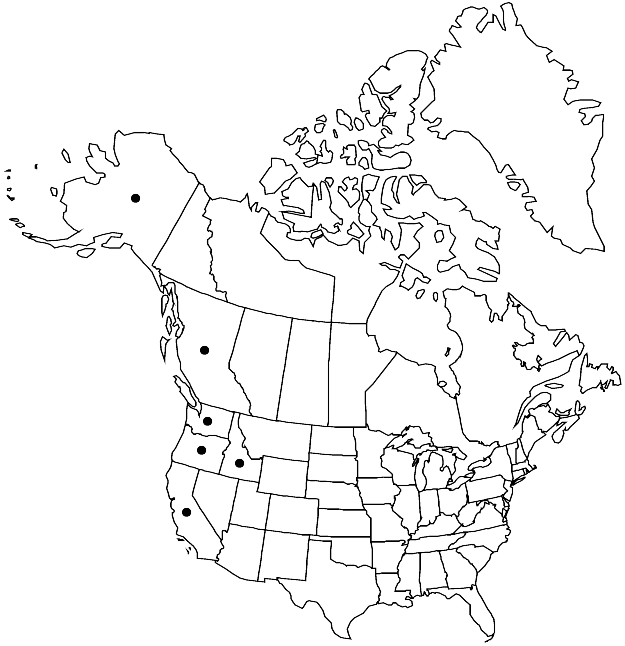Antitrichia californica
Trans. Amer. Philos. Soc., n. s. 13: 11. 1865.
Plants in mats, widespreading, dark green when dry, bright green when moist. Secondary stems to 10 cm, ± regularly pinnate and subfrondiform, lateral branches subequal, to 1.5 cm, flagelliform distally, occasionally fertile or bearing small (less than 5 mm) branchlets. Stem-leaves julaceous when dry, erect-spreading when moist, ovatelanceolate; margins serrulate to sharply denticulate at apex; costa sometimes 2-fid distally, supplementary costae absent or rudimentary, 1–3 on each side of main costa base, length less than 6 cells; laminal cell-walls not or poorly pitted; medial cells 15–22 × 3–6 µm. Branch leaves julaceous and apically recurved when dry, erect-spreading when moist. Perichaetial leaves deltoid to elongate-acuminate, basal laminal cells rectangular, 4–5: 1, walls thin, medial cells flexuose-elongate, 5–8: 1. Seta 0.8–1.1 cm. Capsule erect to asymmetric-curved, brown, cylindric to oblong-cylindric, 2.5–5 mm. Spores 18–22 µm.
Habitat: Bark, decorticated wood, on Quercus, siliceous rock, soil, humic soil, full sun or partial shade
Elevation: low to moderate elevations (0-1200 m)
Distribution

B.C., Alaska, Calif., Idaho, Oreg., Wash., s Europe, sw Asia, n Africa, Atlantic Islands (Canary Islands)
Discussion
Antitrichia californica is a common moss of the more temperate regions of far western North America; the southernmost report for the species is from San Diego County, California, in the peninsular massif within 1 km of the border with Mexico. Northward, the species usually occurs in drier low-elevation inland locations throughout much of cismontane California, in the Columbia, Rogue, Umpqua, and Willamette watersheds, and in Puget Trough. In interior British Columbia, the range follows the Fraser Watershed, mostly south of 50° north latitude; along the Pacific Coast, it occurs from Vancouver Island northwestward as far as Ivanof Bay on the Alaska Peninsula. In cismontane California, southern Oregon, and Willamette Valley, A. californica often dominates the trunks and, more especially, the horizontal branches of oak trees, often in large monoculture patches. The species has been reported only rarely on conifer bark; at higher latitudes it seems to favor rock substrates. The plants are stiff and wiry; the secondary stems curl downward and inward when dry, uncurling to erect when moist; the costae are broad basally, narrowing to the apex; and the juxtacostal laminal cells are sometimes slightly more elongate than the medial cells.
Selected References
None.
